
Date: 2024-08-16 Page is: DBtxt003.php txt00017284
Engineering and Technology
Aircraft from WWII
Which twin-engine fighter from WWII was the best? Was it the P-38 Lightning?
Peter Burgess
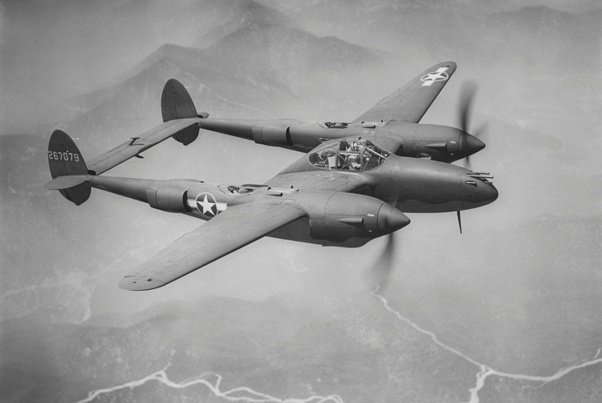 Judging from the Lightning's legendary success in the Pacific and its numbers against the Luftwaffe, the P-38 could handle single-engine fighters, even though early versions of P-38s were not turning fighters. Their speed and rate of climb gave them an advantage in 'boom and zoom' tactics. Late versions of P-38s could out turn single-engine fighters.
There is a difference between the single-seater, twin-engine fighter and destroyer types like the Me 110 and the Bristol Beaufighter. Twin-engine destroyers don't stack up that well against single-engine fighters in daytime combat. When flown properly, twin-engine heavy fighters are a match for lightweight single-engine fighters. Early in WWII, the wrong tactics were being taught for the twins. Once tactics for energy fighters were adopted, the P-38 maintained a positive win to loss ratio against all opposition.
And despite all the disparagement, the plane did dominate. Dogfighting is not the most important mission of a general purpose fighter. In addition to bomber escort, P-38s flew everything from close air support to anti shipping missions. Strategically, until the arrival of the P-47N, the P-38 was the most important fighter in the U.S. arsenal.
The last version of the Lightning to see service in WWII was the P-38M. The M was a two-seat night fighter version developed late in 1945 because the USAAF's purpose built night fighter, the P-61 Black Widow, was too slow. The M arrived too late to score any victories, but its deployment pretty much cinches the claim of the P-38 Lightning to be the most utilitarian aircraft of the war.
The real problem with the P-38 was that the Air Force would never build enough of them for all the missions they assigned to the aircraft. Early in the war, USAAF generals in Europe saw no need for a long range, heavy, offensive fighter. Later in the war, when the 8th AF was in desperate need of a long range, heavy, strategic fighter, the generals threw the P-38 into the breach without first adapting the plane for combat in Europe. The Lightning saved the daylight bombing campaign in Europe until less expensive single-engine alternatives to the P-38 became available.
In the Pacific, the P-38 was accepted immediately because of its long range, and went on to dominate the single-engined opposition. The top two American aces flew P-38s and P-38s were the first American planes to land in Japan.
The only other planes that approached the P-38 in strategic value were the heavy four-engine bombers and the De Havilland Mosquito. The P-38 was a lucky accident. It was not designed to be such a utilitarian aircraft. The Mosquito was utilitarian by design and the RAF loved it.
Judging from the Lightning's legendary success in the Pacific and its numbers against the Luftwaffe, the P-38 could handle single-engine fighters, even though early versions of P-38s were not turning fighters. Their speed and rate of climb gave them an advantage in 'boom and zoom' tactics. Late versions of P-38s could out turn single-engine fighters.
There is a difference between the single-seater, twin-engine fighter and destroyer types like the Me 110 and the Bristol Beaufighter. Twin-engine destroyers don't stack up that well against single-engine fighters in daytime combat. When flown properly, twin-engine heavy fighters are a match for lightweight single-engine fighters. Early in WWII, the wrong tactics were being taught for the twins. Once tactics for energy fighters were adopted, the P-38 maintained a positive win to loss ratio against all opposition.
And despite all the disparagement, the plane did dominate. Dogfighting is not the most important mission of a general purpose fighter. In addition to bomber escort, P-38s flew everything from close air support to anti shipping missions. Strategically, until the arrival of the P-47N, the P-38 was the most important fighter in the U.S. arsenal.
The last version of the Lightning to see service in WWII was the P-38M. The M was a two-seat night fighter version developed late in 1945 because the USAAF's purpose built night fighter, the P-61 Black Widow, was too slow. The M arrived too late to score any victories, but its deployment pretty much cinches the claim of the P-38 Lightning to be the most utilitarian aircraft of the war.
The real problem with the P-38 was that the Air Force would never build enough of them for all the missions they assigned to the aircraft. Early in the war, USAAF generals in Europe saw no need for a long range, heavy, offensive fighter. Later in the war, when the 8th AF was in desperate need of a long range, heavy, strategic fighter, the generals threw the P-38 into the breach without first adapting the plane for combat in Europe. The Lightning saved the daylight bombing campaign in Europe until less expensive single-engine alternatives to the P-38 became available.
In the Pacific, the P-38 was accepted immediately because of its long range, and went on to dominate the single-engined opposition. The top two American aces flew P-38s and P-38s were the first American planes to land in Japan.
The only other planes that approached the P-38 in strategic value were the heavy four-engine bombers and the De Havilland Mosquito. The P-38 was a lucky accident. It was not designed to be such a utilitarian aircraft. The Mosquito was utilitarian by design and the RAF loved it.
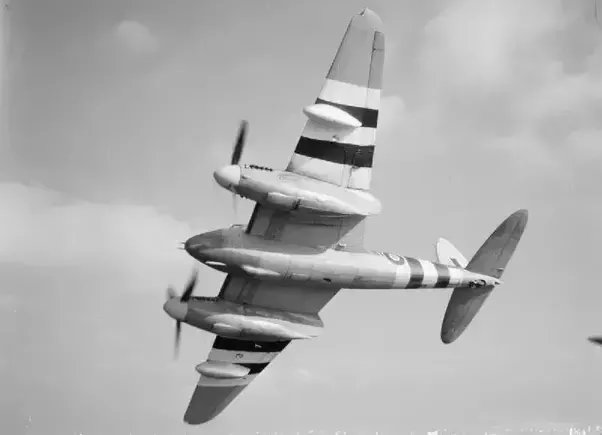 While the Mosquito was a brilliant design, it couldn't mix it up with single-engine fighters during the day. The P-38 could, and for that reason, the P-38 edges out the Mosquito.
The P-38 was lucky to get into the war. Most single-seat, twin-engine daytime fighters were rejected. Air commanders were still mired down in WWI thinking. Light weight and maneuverability were considered more important than speed and range.The Focke-Wulf 187 is an example of an excellent design that was rejected because it was a twin-engine fighter.
While the Mosquito was a brilliant design, it couldn't mix it up with single-engine fighters during the day. The P-38 could, and for that reason, the P-38 edges out the Mosquito.
The P-38 was lucky to get into the war. Most single-seat, twin-engine daytime fighters were rejected. Air commanders were still mired down in WWI thinking. Light weight and maneuverability were considered more important than speed and range.The Focke-Wulf 187 is an example of an excellent design that was rejected because it was a twin-engine fighter.
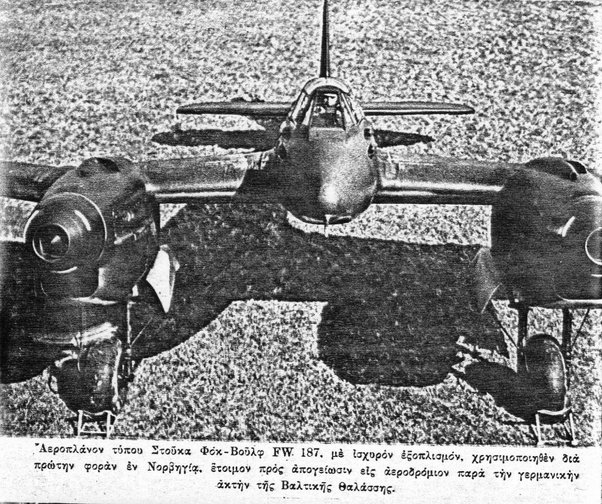 The Allies were fortunate that Goering canceled it. It was fifty miles per hour faster than the Me 109 and had a range of over a thousand miles. If the Germans had replaced the Me 110 with the FW 187 during the Battle of Britain, the Luftwaffe may have been able to win the air battle.
Another early war German also-ran was the He-219. The 219 was a two-seater night fighter with a lot of advanced features. When the 219 was first deployed, it could take out Mosquitos at night. Fortunately, Goering didn't like it, and while the Mosquito was constantly upgraded the 219 was not. The 219 fell behind and like the P-38, it was never built in anything like the numbers that were needed.
The Allies were fortunate that Goering canceled it. It was fifty miles per hour faster than the Me 109 and had a range of over a thousand miles. If the Germans had replaced the Me 110 with the FW 187 during the Battle of Britain, the Luftwaffe may have been able to win the air battle.
Another early war German also-ran was the He-219. The 219 was a two-seater night fighter with a lot of advanced features. When the 219 was first deployed, it could take out Mosquitos at night. Fortunately, Goering didn't like it, and while the Mosquito was constantly upgraded the 219 was not. The 219 fell behind and like the P-38, it was never built in anything like the numbers that were needed.
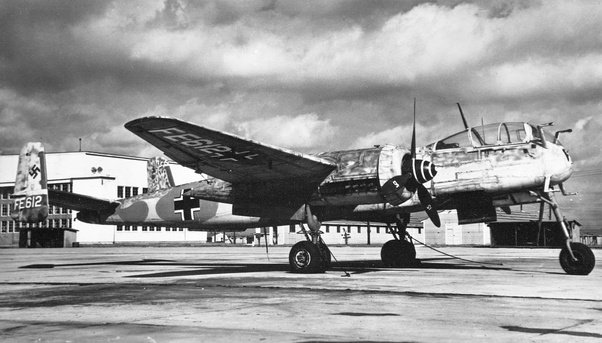 The He 219 anticipated the jet age with tricycle landing gear, ejection seats, a cockpit placed well forward, and engines slung under the wing. The really scary thing about a jet powered He 219 is that not only would it have had the power to take out Allied fighters even during the day, it would have carried enough fuel to actually go somewhere. Thank God Goering didn't like it.
My absolute favorite early war also ran was the Grumman F5F-1 Skyrocket. The plane's name pretty much says it all. Unfortunately, the Skyrocket was also the plane with no nose, so it was doubly damned.
The He 219 anticipated the jet age with tricycle landing gear, ejection seats, a cockpit placed well forward, and engines slung under the wing. The really scary thing about a jet powered He 219 is that not only would it have had the power to take out Allied fighters even during the day, it would have carried enough fuel to actually go somewhere. Thank God Goering didn't like it.
My absolute favorite early war also ran was the Grumman F5F-1 Skyrocket. The plane's name pretty much says it all. Unfortunately, the Skyrocket was also the plane with no nose, so it was doubly damned.
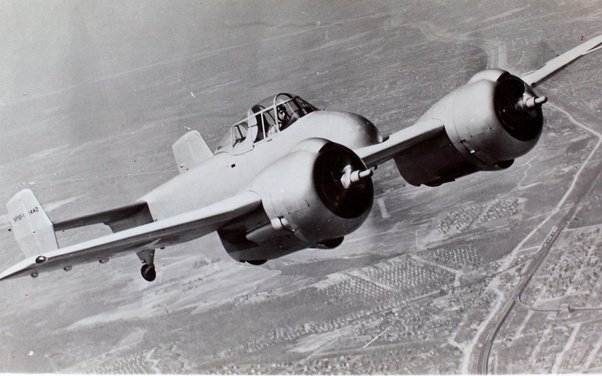 Despite its excellent range and smoking hot performance (it was faster and could outclimb a P-38) the U.S. Navy just wasn't ready for a twin-engine carrier based fighter. Especially one with no nose. It was, of course, a preference and not a prejudice.
More than anything else, what twin-engine fighters needed to stand a chance against single-engine fighters was to overcome resistance by conservative air staffs.
Despite its excellent range and smoking hot performance (it was faster and could outclimb a P-38) the U.S. Navy just wasn't ready for a twin-engine carrier based fighter. Especially one with no nose. It was, of course, a preference and not a prejudice.
More than anything else, what twin-engine fighters needed to stand a chance against single-engine fighters was to overcome resistance by conservative air staffs.